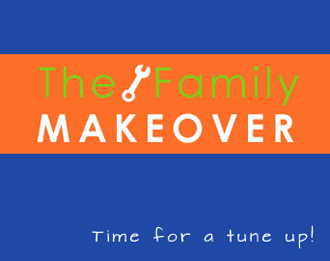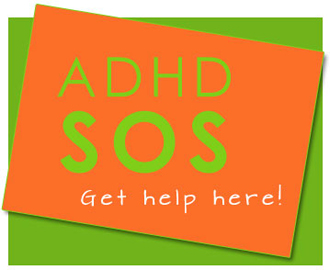Struggling to make a decision because you’re afraid of what might happen next? In this episode, we unpack decision fatigue, inner conflict, and why wanting two things at once isn’t a flaw. Learn a simple 5-step framework to find clarity, create emotional anchors, and make confident choices—even when the outcome depends on someone else.
Topics for the ‘Organization’ Category
How to achieve your goals when you have a habit of quitting.
” Never, Never, Never Give Up ~ Winston Churchill
What is getting in your way when you are trying to achieve a goal? Today’s episode explores reasons that you are not getting what you wwant and offers suggestions on how to change that.
Have you already subscribed to my podcast? If not, I’m encouraging you to do that today. I wouldn’t want you to miss an episode.
And, if you’re feeling extra loving, please share it and leave a review; it makes it easier to find. We can all benefit from a little nudge to start making small shifts towards increased health and happiness 🙂
Now Or Later

Procrastination is a psychological behavior that affects everyone to some degree or another. For some people it can be a minor problem; for others it is a source of considerable stress and anxiety.
One of the reasons children procrastinate is because they do not find the task fun or interesting. In fact, they tend to put off boring tasks until someone calls them out on it. Even then, they usually underestimate the time needed and effort that the task requires. Another reason may be that they do not feel confident that they can do what is asked of them. They may feel overwhelmed or confused on what to do first.
The following tips can help your child stop procrastinating:
- Set firm rules at home. Whether it’s completing homework or picking up their room, make sure that your child knows what is expected of him. Set basic rules such as “no TV until homework is done, checked and packed”. The trick here is to be consistent with the rule.
- Chunk it down. Some children need a series of baby steps to get them going. Start by organizing what needs to occur. Creating a visual that shows them step-by-step what to do often helps with the feeling of overwhelm. Include how much time each task should take.
- Get rid of perfectionism. Let them know that the goal is to get started, not necessarily to do it perfect. They can always tweak it later. If your child is stuck, just help them so they can keep going and not give up. Remember the goal is to get them going.
- Celebrate what they accomplish. Don’t wait until the end to say, “good job”, instead inspire them to continue what they are doing. You can say, “ you’re doing good- making progress” or
“almost done- keep going”.
Procrastinating is a habit. Your child needs your help to remind them that they will be able to start and complete the task. So instead of just telling them what to do, offer some support and jump in when needed. After a while, you will see that their confidence rises and they may not need your help anymore.
Is it a quirk or OCD?

Almost everyone has a quirk or two.
Some people have to organize their shirts by color. Some need to dot their I’s a special way. Some have to clean their kitchen in just a certain way. Some always double-check the front door before they go to sleep.
Quirks. Quirks, I tell you!
Unless …
You feel that a disorganized closet is going to ruin your day, your week, or even your life (and you will panic and feel sick over it until you fix it). You think that if you don’t dot your i’s just so it might mean that something bad will happen to your family. You think that if you don’t follow a particular routine in cleaning, you (or people you love) are going to get really sick and probably die. You think that if you don’t check the front door, a murderer will certainly get inside, kill your entire family, and it will actually be all your fault.
Those are just some examples off the top of my head, but my point is this: if it doesn’t interfere with your daily functioning and cause you severe distress, it’s not OCD.
In fact, it’s built into the very definition: OCD is an anxiety disorder characterized by intrusive thoughts that produce uneasiness, apprehension, fear, or worry; by repetitive behaviors aimed at reducing the associated anxiety; or by a combination of such obsessions and compulsions.
OCD is an anxiety disorder. It ruins people’s lives. It steals joy from them. It gives them a sickening feeling of terror.
Quirks don’t give you a feeling of doom. They can mess with your head for a bit but you overcome them quickly.
Please don’t feed into the misrepresentation. You are not “so OCD” just because you organize your sock drawer. If, on the other hand, you believe that something terrible will happen if you don’t organize it just right, and if the organization and reorganization of your drawer seems to be adding to your distress, well, that’s another story.
Talk to a professional, who specializes in OCD, if you are worried.
The Family Talking Stick
 Did you ever have a talking stick when you were little? Sometimes teachers use them to teach children how to wait their turn before talking, but they are great tools for families too. A talking stick provides a simple and fun way to teach everyone in your family how to listen to other people when they are talking, as well as take turns. As with most activities I recommend, there is no one “right” way to do this…. Feel free to get creative.
Did you ever have a talking stick when you were little? Sometimes teachers use them to teach children how to wait their turn before talking, but they are great tools for families too. A talking stick provides a simple and fun way to teach everyone in your family how to listen to other people when they are talking, as well as take turns. As with most activities I recommend, there is no one “right” way to do this…. Feel free to get creative.
- To make a talking stick, I suggest using a plastic pole, like the ones used in plumbing from your local hardware store or perhaps the inside of a paper towel roll.
- The next step is to gather basic art supplies. This might include permanent markers, glitter glue, foam stickers, or anything else that looks fun and creative. You might also want to add beans, rice or small pebbles in the inside of the stick to make some noise. You can cover the ends with cardboard and masking tape.
- Sit down as a family and explain that you are going to make a family talking stick together. Invite them to decorate it, and as they do so, explain to them how it will be used.
The rules for the talking stick are simple enough that even very young children can understand them: whoever has the talking stick in their hands gets to talk. If you don’t have the talking stick, you need to wait to speak until you have it. This works well for dinnertime, car rides, or other circumstances where children may find themselves talking over each other (or fighting) a lot. The talking stick teaches them how to listen to others and wait their turn. I suggest having a time limit for how long someone can have the talking stick, and you might even keep a timer to moderate it. If you have other creative ways you’ve seen someone else use a talking stick, please feel free to share them!



